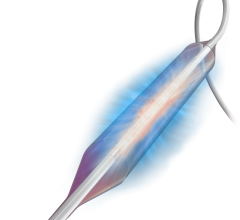
Carotid stenting is a more complex and challenging procedure than coronaries or peripheral vessels. Carotid stenting experts have the following advice for hospitals and physicians that want to enter this market.
Patient Selection
Patient selection is a major concern when it comes to carotid stenting. Many trials focus on the most complex cases in some of the sickest patients, and many times these patients have several co-morbidities, said Sriram Iyer, M.D., FACC, associate chairman, Heart and Vascular Institute, Lenox Hill Hospital, N.Y. Many times these patients also have left main coronary artery disease, aortic stenosis and renal dysfunction, among other problems. His recommendation is to keep procedures as simple as possible by using careful patient selection.
“Avoid these complicated patients and keep it simple,” he explains. This will lead to fewer complications.
He said the most critical part of carotid cases is accessing the carotid arteries via the aortic arch. “The two important things you need are speed and minimal manipulation, because at this time you have no embolic protection,” Iyer said. However, MRI or CT imaging plays a big role in being able to select patients who do not have heavy “popcorn” plaque in their aortic arch or heavy plaque burden and tortuous vessels leading into the carotids, which might make stenting a less attractive option because of the stroke risk.
Pre-Procedure Imaging
Ultrasound, MRI or CT imaging is needed to screen patients to see if they are good candidates for stenting. Some circumstances that might make physicians think twice about transcatheter interventions include extremely sharp bends in the vessel, which will likely cause emboli as wires are pushed through the vessel before an embolic protection device (EPD) can be deployed. EPDs are required for carotid stenting reimbursement from the Centers of Medicare and Medicaid Services (CMS).
Techniques
From his experience, Iyer offers the following helpful techniques for carotid stenting:
• Pre-dilatation of the vessel with a 2-2.5 mm coronary balloon to aid in the deployment of the EPD.
• EPDs generally do not offer complete vessel wall apposition in bends.
• Use a buddy wire to help straighten the vessel to deliver the EPD and to secure the vessel.
• Use a Judkins Right catheter to help support and enter the carotid side branch.
• If the anatomy of the occlusion is in a
bend, use an open-cell design stent because they bend easier.
• EPD dwell time should be less than seven minutes, because after that time fibrin quickly accumulates and clots the filter.
• Move the patient’s head to help rotate vessels in the neck.
• Ideal lesions to stent are those in straight segments of the vessel.
Barry Katzen, M.D., FSIR, medical director of Baptist Cardiac and Vascular Institute and clinical professor of radiology at the University of Miami School of Medicine, Miami, Fla., also suggests using Doppler ultrasound of the carotid artery to measure flow velocity prior to and following stenting.
Complications of Carotid Stenting
Carotid stenting studies between 2000 and 2008 showed major adverse coronary and cerebral events (MACCE) rates dropped from 8.3 percent down to 2.3 percent, mainly because operators became more experienced as time went on, said Daniel McCormick, D.O., director, cardiac catheterization laboratory at Hahnemann University Hospital, Philadelphia. “The second half of the CREST trial had a significant decrease in complications and that is all about the experience level of the operators improving,” McCormick said. “You really need to know when to quit when things are not going well.”
Katzen agreed, saying, “There has been a major improvement in patient outcomes in each of these trials. This is due to better techniques and increased operator experience...Stents will protect patients against stroke just as well as surgery.”
However, Katzen said operators need to be highly experienced to keep complications to a minimum. He advocates for only a limited number of operators at higher-volume facilities to serve as the carotid stenting experts.
McCormick said some of the complications operators may encounter include:
• Post stenting bradycardia/hypotension, caused by balloon pressures on carotid baroreceptors.
• Atropine-induced confusion in elderly patients, which complicates post-procedure neurological assessments.
• Cerebral hemorrhage is rare, but usually fatal. If suspected, the procedure needs to be terminated, reverse heparin and conduct an emergency CT scan.
• Carotid stent thrombosis, which can be aspirated.


 April 25, 2023
April 25, 2023 








